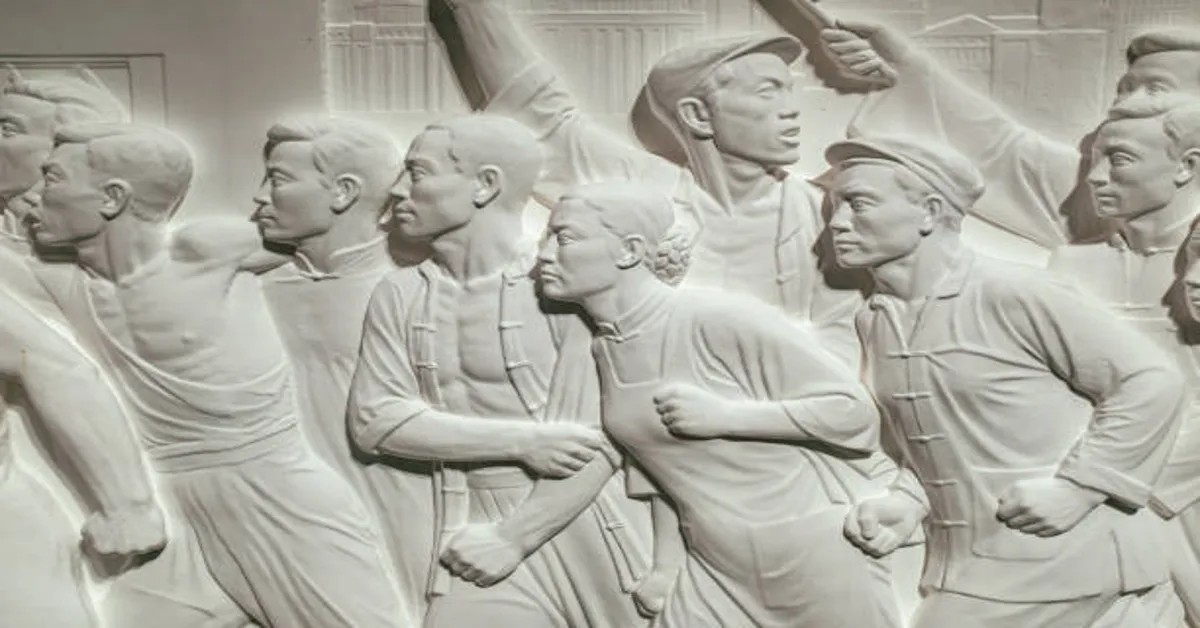Introduction
The word “fascisterne” is Danish for “the fascists,” and although it is a term rooted in a specific political ideology, it evokes strong emotional and historical associations for many. To understand the true nature of fascisterne, we must go beyond the surface-level associations of authoritarianism, violence, and extremism. We must explore the roots of fascism, its development during the 20th century, the reasons behind its rise, its manifestations across different countries—including Denmark—and the long-term consequences it has left behind.
Fascism is not just a historical episode but an ideology that continues to influence certain movements and political sentiments around the world today. When we discuss “fascisterne,” we are talking about the individuals and organized groups who identify with or implement fascist ideologies. These figures and entities shaped some of the darkest chapters in modern history, and their legacy continues to be studied in political science, philosophy, and history.
What Is Fascism?
Fascism is a far-right, authoritarian ultranationalist political ideology and movement characterized by dictatorial power, forcible suppression of opposition, strong regimentation of society and the economy, and often a belief in racial or cultural supremacy. It is a revolutionary ideology that rejects democratic institutions, liberalism, socialism, and communism, aiming instead to create a homogenous national community through totalitarian control.
The core values of fascism include militarism, nationalism, anti-communism, and the belief in a strong centralized state ruled by a powerful leader. Fascisterne—the adherents of fascism—believe that democracy is weak and inefficient, favoring a political system that demands loyalty, conformity, and obedience to a singular national vision.
The Historical Origins of Fascism
Fascism originated in the early 20th century in Europe, primarily as a reaction to the political and economic chaos following World War I. Italy was the birthplace of organized fascism, with Benito Mussolini founding the Fasci Italiani di Combattimento in 1919, which later became the National Fascist Party.
Mussolini’s regime offered a model that was soon followed and adapted by other nations. In Germany, Adolf Hitler’s National Socialist German Workers’ Party (Nazi Party) developed a version of fascism deeply rooted in racial ideology and anti-Semitism. These movements emerged in a time of mass unemployment, national humiliation, and growing fear of socialism. Fascisterne promised national revival, economic stability, and restoration of pride.
Fascism was also present in Spain under Francisco Franco, in Portugal under Salazar, and in several other countries either through direct regimes or sympathizing movements.
Characteristics of Fascisterne: Beliefs and Behavior
Understanding fascisterne requires examining the psychological, political, and social behavior of those who align with this ideology. These individuals or groups often demonstrate a combination of the following characteristics:
- Ultranationalism: Fascisterne believe in the superiority and purity of their nation, culture, or ethnicity. They often frame their ideology around national rebirth and the rejection of foreign influence or multiculturalism.
- Authoritarianism: Fascisterne reject pluralistic democracy and support a single-party state or strongman leadership where dissent is either suppressed or eliminated entirely.
- Propaganda and Censorship: Fascist regimes have historically relied on mass propaganda to manipulate public opinion and used censorship to silence opposition.
- Militarism and Violence: Fascisterne often glorify military power and may use paramilitary groups or state violence to enforce their ideology and eliminate enemies.
- Anti-Communism and Anti-Liberalism: Fascisterne position themselves against leftist ideologies, especially socialism and communism, which they view as threats to national unity.
- Corporatism: Fascist regimes often implement a controlled economic model where industries are collectively managed by employers, workers, and state officials to suppress class conflict.
These traits form the core identity of fascist movements, and though not always present simultaneously or uniformly, they are commonly observed in historical examples of fascisterne.
Fascisterne in Scandinavia and Denmark
While most discussions on fascism focus on Germany and Italy, it is important to acknowledge the existence of fascisterne in the Nordic countries. During the interwar period, Denmark, Sweden, and Norway saw the rise of small but vocal fascist parties.
In Denmark, the National Socialist Workers’ Party of Denmark (DNSAP) was founded in 1930. Though it never gained mass support comparable to its German counterpart, it adopted many of the same symbols and ideals, including the swastika, anti-Semitic rhetoric, and admiration for Adolf Hitler. The DNSAP attracted members from the lower middle class and veterans who felt disillusioned by the effects of the Great Depression and the weakness of democratic institutions.
During the German occupation of Denmark from 1940 to 1945, Danish fascisterne collaborated with the Nazi regime. They hoped that their loyalty would result in political influence, but they remained largely sidelined. After the war, many of these collaborators were prosecuted, and fascism was widely rejected by the Danish public.
Despite its historical marginality in Denmark, the existence of fascisterne in this region serves as a cautionary tale about how quickly fringe ideologies can gain momentum during times of crisis.
The Role of Propaganda in Strengthening Fascisterne
One of the most powerful tools used by fascisterne historically has been propaganda. Through mass media, education systems, rallies, films, and even art, fascist leaders cultivated loyalty and shaped public perception. Propaganda was not just about spreading misinformation—it was about creating a new reality aligned with fascist ideals.
In Nazi Germany, Joseph Goebbels, the Minister of Propaganda, famously emphasized the importance of repeating lies until they became accepted as truth. Fascist propaganda played on emotions—fear, pride, anger—and used simple slogans, national myths, and enemy images to unify the population against a common threat.
The aesthetic of fascist propaganda often included bold symbols, uniformity, dramatic imagery, and public rituals that evoked feelings of belonging and purpose. These tactics were not limited to Germany or Italy; fascisterne in all nations used similar methods to attract followers and solidify their ideology.
Psychological and Sociological Roots of Fascism
The appeal of fascism cannot be understood purely through politics; it also requires an examination of the psychological needs it fulfills. Fascism thrives in periods of uncertainty, fear, and rapid change. It provides simple answers to complex problems and offers identity and belonging in a fragmented society.
People drawn to fascisterne often feel alienated or powerless. The ideology provides them with a sense of purpose, superiority, and control. Fascism taps into deep emotional needs—order, structure, identity, and revenge against perceived enemies. It creates a clear division between “us” and “them,” simplifying the world into black-and-white categories.
Sociologically, fascism gains traction when institutions fail—when economic collapse, political polarization, or cultural upheaval undermines people’s faith in democracy or progress. In such times, fascisterne appear to offer strength, stability, and unity.
The Consequences of Fascisterne’s Rise
The historical consequences of fascisterne’s rise to power are devastating. In Germany and Italy, fascism led to the deaths of millions through war, genocide, and repression. The Holocaust, World War II, and widespread human rights abuses were direct outcomes of fascist governance.
Fascisterne dismantled democratic institutions, abolished freedom of speech, imprisoned dissenters, and targeted minorities. They also restructured societies to serve the needs of the state above all else. Individual rights were subordinate to collective nationalist goals.
In post-war Europe, fascism became a symbol of moral and political failure. It prompted international agreements, human rights declarations, and new systems of governance to prevent its resurgence. Still, the shadows of fascism linger in fringe movements and reactionary politics even today.
Modern Echoes of Fascism
In the 21st century, fascism does not typically wear a swastika or call itself by that name. However, many of the ideas associated with fascisterne—ultranationalism, xenophobia, authoritarianism—continue to appear in political discourse around the world.
Movements that demonize immigrants, suppress dissent, glorify the nation-state, or seek to consolidate power often draw from fascist ideology whether knowingly or not. The term “neo-fascism” is used to describe these modern variants, which may adapt to digital technologies, social media, and populist rhetoric.
Recognizing these patterns is essential. While not every nationalist movement is fascist, the boundary can blur when democratic values are abandoned in favor of control, exclusion, and intolerance. Studying the fascisterne of the past helps societies build safeguards for the future.
Education as a Defense Against Fascism
One of the most powerful tools against the return of fascisterne is education. Teaching history honestly and critically, fostering empathy, encouraging civic participation, and promoting tolerance are all crucial elements in building resilience against authoritarian ideologies.
Schools, universities, and cultural institutions must take responsibility for explaining not only what fascism is, but why it has appealed to people in the past. Understanding its emotional and structural roots allows future generations to recognize the warning signs and reject simplistic narratives.
Media literacy is also vital. In a world filled with disinformation, echo chambers, and algorithmic radicalization, citizens must learn to evaluate sources, question motives, and think critically. These skills help inoculate societies against fascist manipulation.
Conclusion
The term “fascisterne” carries a weight that transcends language. It represents a dangerous but fascinating part of human political development. While most of the world has rejected fascism in its classical form, the underlying impulses that gave rise to fascisterne—fear, identity, insecurity, and anger—still exist.
This is why studying the history, ideology, and behavior of fascisterne is not just an academic exercise, but a moral and civic duty. In a time when the world is once again confronting polarization, misinformation, and authoritarian temptation, understanding fascism becomes more relevant than ever.
By educating ourselves, engaging in democratic processes, and standing up for pluralism and human rights, we not only remember the past—we protect the future from repeating it.
ALSO READ: Jaden Newman Erome: A Detailed Look at Her Life, Career, and Digital Presence
Frequently Asked Questions (FAQs)
1. What does “fascisterne” mean in English?
“Fascisterne” is the Danish word for “the fascists,” referring to individuals or groups who adhere to fascist ideology.
2. Is fascism still present in today’s world?
While classical fascism is rare today, many modern movements display similar authoritarian and ultranationalist traits, often referred to as neo-fascism.
3. What are the core beliefs of fascisterne?
Fascisterne typically believe in ultranationalism, centralized authoritarian power, suppression of dissent, and rejection of liberal democracy and socialism.
4. Were there fascist groups in Denmark?
Yes. The National Socialist Workers’ Party of Denmark (DNSAP) was a fascist party active during the 1930s and WWII, though it remained marginal.
5. How can society prevent the return of fascist ideologies?
Through critical education, active civic engagement, media literacy, and protecting democratic institutions, societies can build resistance against fascist ideologies.









